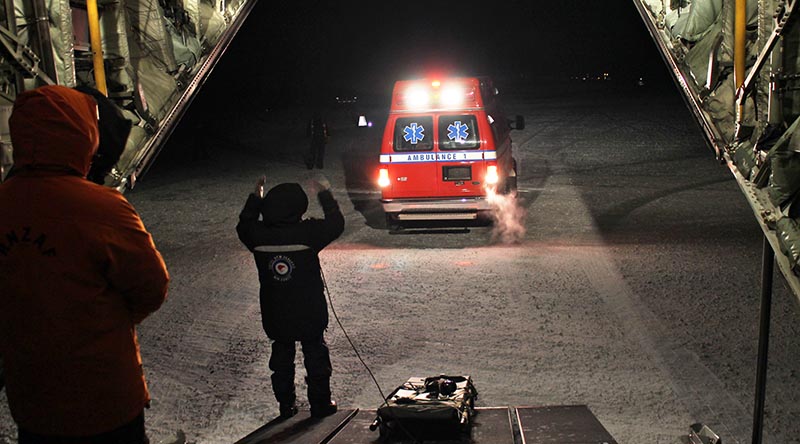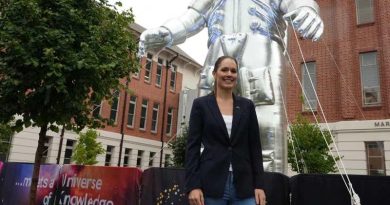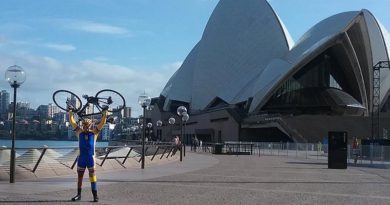RNZAF flies medivac from Antarctica

Aircrew on a Royal New Zealand Air Force C-130 Hercules have carried out a medical evacuation of a patient from McMurdo Station in Antarctica.
CAPTION: A C-130H Hercules carries out a medical evacuation in Antarctica. Supplied by Waynne Williams/Antarctica New Zealand
The aircraft, with 13 crew on board including two New Zealand Defence Force medical personnel, left Christchurch for Antarctica at 10.25pm yesterday. The aircraft landed back in Christchurch shortly after 2pm today.
The crew used night vision goggles to land the aircraft in the dark on the ice runway. This is the first time the RNZAF has flown a medevac mission to Antarctica using this technology.
The patient, who is a member of the United States Antarctic Program, was not suffering from life-threatening injuries and is now receiving further medical treatment.
Air Component Commander Air Commodore Shaun Sexton said the NZDF had been providing support to Antarctica New Zealand and the United States Antarctic Program for many years but missions like this occur infrequently.
“We were pleased to be able to assist our US partners when the call came to help with the medevac. The aircrew and supporting New Zealand and US personnel in both Antarctica and in New Zealand did an outstanding job to complete this difficult medevac,” he said.
RNZAF Base Auckland Commander Group Captain Andy Scott said the Air Force team had been trying to get to Antarctica since last Saturday but poor weather had hampered efforts all week.
“Flying to Antarctica is one of the highest risk missions we fly due to the lack of divert airfields and inability to get down and back without refuelling. The crews therefore are highly trained to analyse the situation with regards to the weather and the airfield state before making a decision to proceed,” he said.
“Flying in winter presents even more challenges due to the extreme cold, the rapidly changing weather and little to no visual warnings of the changes you would ‘see’ in summer,” he said.
The Phoenix airfield at McMurdo was prepared by ground crew in Antarctica who made sure the runway was lit and that it was safe for the aircraft to land.
The aircraft refuelled at McMurdo while the patient was picked up before getting airborne a short time later.
Group Captain Scott also said the RNZAF C-130 fleet had clocked up 150,000 flying hours of service today during the return flight to New Zealand.
.
.

.
.





